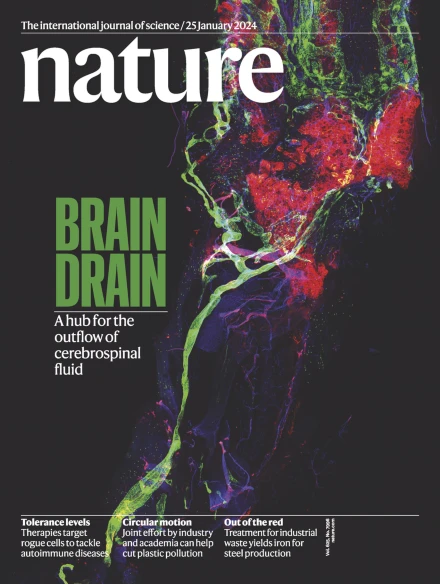Precisely defining disease variant effects in CRISPR-edited single cells.
IF 48.5
1区 综合性期刊
Q1 MULTIDISCIPLINARY SCIENCES
引用次数: 0
Abstract
Genetic studies have identified thousands of individual disease-associated non-coding alleles, but the identification of the causal alleles and their functions remains a critical bottleneck1. CRISPR-Cas editing has enabled targeted modification of DNA to introduce and test disease alleles. However, the combination of inefficient editing, heterogeneous editing outcomes in individual cells and nonspecific transcriptional changes caused by editing and culturing conditions limits the ability to detect the functional consequences of disease alleles2,3. To overcome these challenges, we present a multi-omic single-cell sequencing approach that directly identifies genomic DNA edits, assays the transcriptome and measures cell-surface protein expression. We apply this approach to investigate the effects of gene disruption, deletions in regulatory regions, non-coding single-nucleotide polymorphism alleles and multiplexed editing. We identify the effects of individual single-nucleotide polymorphisms, including the state-specific effects of an IL2RA autoimmune variant in primary human T cells. Multimodal functional genomic single-cell assays, including DNA sequencing, enable the identification of causal variation in primary human cells and bridge a crucial gap in our understanding of complex human diseases.在crispr编辑的单细胞中精确定义疾病变异效应。
遗传学研究已经确定了数千个与疾病相关的非编码等位基因,但确定致病等位基因及其功能仍然是一个关键瓶颈。CRISPR-Cas编辑使DNA靶向修饰能够引入和测试疾病等位基因。然而,低效的编辑、单个细胞中的异质编辑结果以及编辑和培养条件引起的非特异性转录变化的结合,限制了检测疾病等位基因功能后果的能力2,3。为了克服这些挑战,我们提出了一种多组单细胞测序方法,可以直接识别基因组DNA编辑,分析转录组并测量细胞表面蛋白表达。我们应用这种方法来研究基因破坏、调控区域缺失、非编码单核苷酸多态性等位基因和多重编辑的影响。我们确定了个体单核苷酸多态性的影响,包括IL2RA自身免疫变异在原代人T细胞中的状态特异性影响。包括DNA测序在内的多模态功能基因组单细胞测定能够确定人类原代细胞的因果变异,并弥补了我们对复杂人类疾病的理解中的一个重要空白。
本文章由计算机程序翻译,如有差异,请以英文原文为准。
求助全文
约1分钟内获得全文
求助全文
来源期刊

Nature
综合性期刊-综合性期刊
CiteScore
90.00
自引率
1.20%
发文量
3652
审稿时长
3 months
期刊介绍:
Nature is a prestigious international journal that publishes peer-reviewed research in various scientific and technological fields. The selection of articles is based on criteria such as originality, importance, interdisciplinary relevance, timeliness, accessibility, elegance, and surprising conclusions. In addition to showcasing significant scientific advances, Nature delivers rapid, authoritative, insightful news, and interpretation of current and upcoming trends impacting science, scientists, and the broader public. The journal serves a dual purpose: firstly, to promptly share noteworthy scientific advances and foster discussions among scientists, and secondly, to ensure the swift dissemination of scientific results globally, emphasizing their significance for knowledge, culture, and daily life.
 求助内容:
求助内容: 应助结果提醒方式:
应助结果提醒方式:


